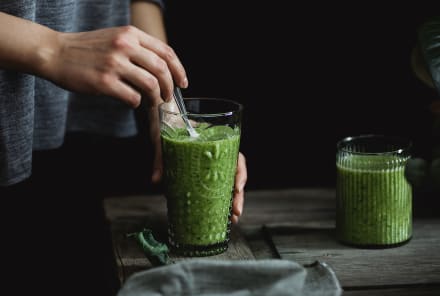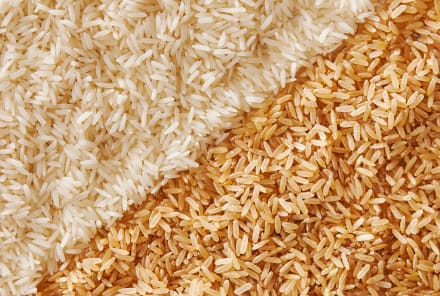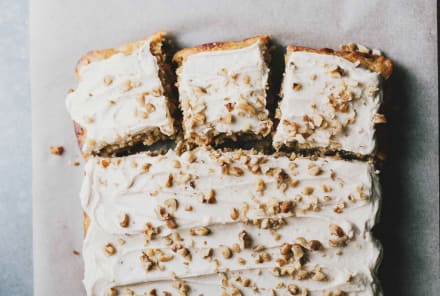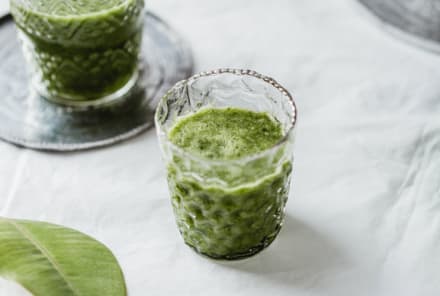Advertisement
Trying To Cut Back On Sugar? This Doc Doesn't Want You To Quit Cold Turkey
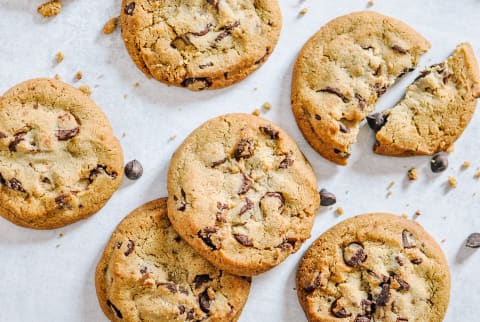
Rather than quitting cold turkey, a gradual plan is a way of slowly letting go of an unhealthy habit by gradually replacing it with something else, allowing you to circumvent the possibility of withdrawal. One obvious example of a gradual plan is when smokers use nicotine gums or patches or when they take Zyban or other medications. These approaches blunt the agonies of withdrawal either by tapering off nicotine intake slowly or by helping to restart the production of dopamine and other brain chemicals that cigarette smoking has undermined.
Likewise, with sugar, this way of gradually removing sugar from your diet will keep you from feeling any withdrawal symptoms by having you continue to eat the foods you crave.
With a gradual plan, you'll never feel a single withdrawal symptom. That's because you'll be adding new foods, activities, and thought patterns to your daily routine so that you'll have restored your body's ability to manufacture its vital brain chemicals. Omega-3s, amino acids, vitamins, and minerals in foods support serotonin and dopamine production. So, when you begin to cut back on the addictive foods (i.e., sugar), your body will be getting all the serotonin and dopamine that it needs. This gradual plan makes the transition from addiction to freedom feel easy and even pleasant.
How does it work?
Did you know it takes at least 10 exposures to a new healthy food to accept and then to crave it? That's why you should add so many healthy foods to your diet gradually over time. You're giving your body time away from pepperoni pizza and start to crave salmon, to gradually move from cookies and doughnuts and start to crave blueberries and spinach. Replacing the old unhealthy cravings with healthy new ones will happen gradually and naturally so that you never experience withdrawal and you never feel deprived.
A more gradual plan is based on the understanding that it takes a month for the human brain to create a habit. So during a month, if you create healthy new habits—habits that you'll start to cultivate long before you have to give up any of your unhealthy old habits!
A gradual plan is accomplished through the two cornerstones: pitfalls and boosters.
Pitfalls
A pitfall food—something filled with sugar, for example—temporarily lifts your serotonin or dopamine levels, but the high is soon followed by a crash, and, as we've seen, these foods undermine your body's ability to make its own stores of these vital brain chemicals and will shrink your brain over time.
These foods are often hard to recognize as pitfalls, especially if we're used to having them. But if you can let go of those pitfalls, you might be amazed at how much better you feel—and at how much better your life becomes.
Boosters
Boosters are the opposite of pitfalls—they boost your stores of serotonin and dopamine and grow your brain, giving you the physical and emotional nourishment that your body, mind, and spirit crave. This includes high amounts of anti-inflammatory omega-3s, amino acids, vitamins, and minerals that keep the brain healthy.
If one day's diet includes organic, no-sugar-added yogurt, berries, salmon, and fresh vegetables, you have spent that day taking good care of your brain, helping yourself feel calm, optimistic, and energized.
That said, there are two steps to the gradual plan process:
- First add booster foods to your life.
- Then gradually reduce pitfall foods.
That's it. It's that simple. Fill your life with foods, activities, and thought patterns that grow your brain, and you'll find it remarkably easy to let go of the pitfall foods and thought patterns that have been setting you up food addictions. Once your life is full of boosters, you'll have a much easier time eliminating the pitfalls!
Why a gradual plan works where diets fail.
If you're like most people, pitfall foods are a part of your everyday life, keeping you addicted and coming back for more. I'm sure you've tried not once but many times to limit your calories or portions—but to no avail. If you're like the vast majority of people, you've been on diet after diet.
Why don't diets work? They didn't free you from your addiction to pitfall foods. To make matters worse, they don't address the withdrawal that you're likely to feel if you try to cut back on pitfall foods abruptly, without addressing your brain chemistry.
To make matters still worse, the outside-in approach is doomed to fail in the long run because, without addressing food addiction, you're going to keep longing for pitfall foods that temporarily boost serotonin and dopamine levels. You may be able to resist those longings when things are going well, but when stress or major challenges inevitably reenter your life, you're likely to turn to the old reliable pitfalls that pull you deeper into addiction.
The solution? Don't cut cold turkey!
A gradual plan, by contrast, works from the inside out. I want you to let go of pitfall foods only when you feel ready to do so. Keep eating sugar, flour, pro-inflammatory soybean oil, grains, and fried foods. I'll go further—I don't want you to cut back. Just up your fruit and vegetable intake. All the vitamins and minerals you'll be consuming will help your body to convert amino acids into feel-good serotonin and dopamine, and it's a potent way to begin shifting from a pro-inflammatory to an anti-inflammatory diet. The letting go of your old ways of eating, thinking, and feeling will practically happen by itself.
Adding food to your diet will tackle the root of sugar brain. Tackle food addiction through boosters that will help you balance your brain chemistry, so you can have the body, the brain, and the life you want.
Suddenly, adhering to any dietary restrictions will be doable because you've worked from the inside out. Since you're now feeding your brain chemistry, you'll probably find yourself wanting to eat less in general.
Nothing will be off-limits forever because, as the research shows, occasional exposure to pitfall foods doesn't cause addiction. Not to mention that saying "I'll never eat sugar again" sometimes can make you want it more!
Excerpted from The Sugar Brain Fix: The 28-Day Plan To Quit Craving the Foods That Are Shrinking Your Brain and Expanding Your Waistline by Mike Dow (Hay House Inc., January 14, 2020)
Watch Next
Enjoy some of our favorite clips from classes
Enjoy some of our favorite clips from classes
What Is Meditation?
Mindfulness/Spirituality | Light Watkins
Box Breathing
Mindfulness/Spirituality | Gwen Dittmar
What Breathwork Can Address
Mindfulness/Spirituality | Gwen Dittmar
The 8 Limbs of Yoga - What is Asana?
Yoga | Caley Alyssa
Two Standing Postures to Open Up Tight Hips
Yoga | Caley Alyssa
How Plants Can Optimize Athletic Performance
Nutrition | Rich Roll
What to Eat Before a Workout
Nutrition | Rich Roll
How Ayurveda Helps Us Navigate Modern Life
Nutrition | Sahara Rose
Messages About Love & Relationships
Love & Relationships | Esther Perel
Love Languages
Love & Relationships | Esther Perel


